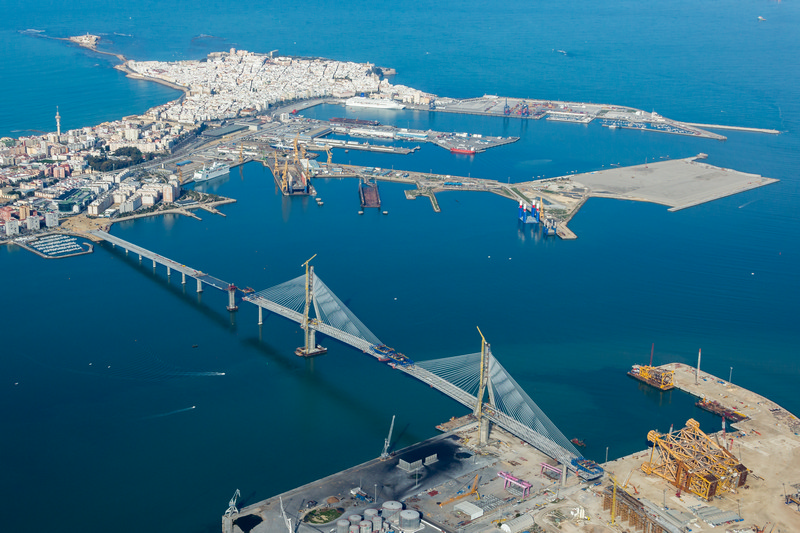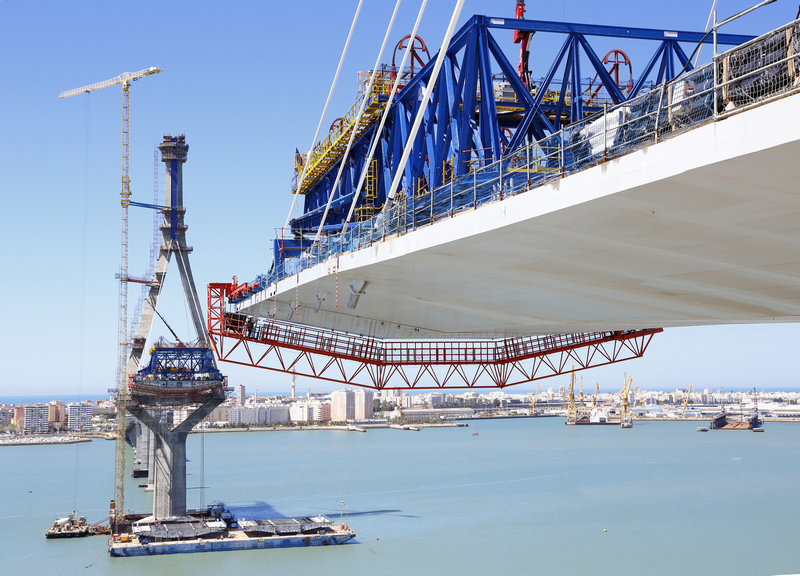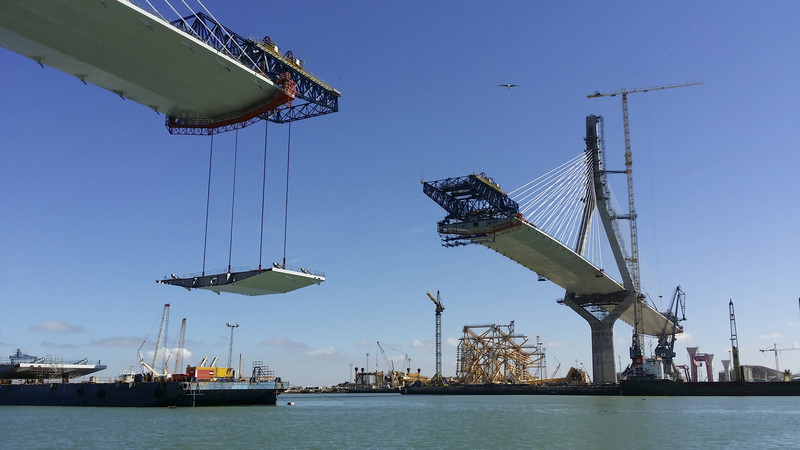The tower cranes that built the new bridge across the Bay of Cadiz are gone now, but the tale of how the cranes were put up, put to work and then taken down again lives on among the builders.

From anywhere on the shore of the Bay of Cadiz, the Puente de La Pepa now dominates the view. The newly opened bridge connects the ancient peninsular city of Cadiz to the Spanish mainland. This year, for the first time in eight years, the bridge dominates the view alone, unaccompanied by the two Linden Comansa tower cranes deployed during those years to build it. The assembly and disassembly of the cranes was a feat of engineering just as intriguing as the construction of the bridge itself.

The cable-stayed bridge is 3,092m long, and each of its two pylons is185m high, with a main span of 540m between them, soaring 69m above sea level. Its construction was a mighty project, requiring the deployment of two equally mighty Linden Comansa 21LC400 tower cranes belonging to the construction company Dragados. In Hong Kong, Linden Comansa cranes were used in building the North Lantau Hospital and The Royal Garden Hotel in Kowloon.
The Dragados 21LC400s were positioned where the pylons of the Puente de La Pepa now stand, one on the bay shore, the other in the middle of the bay. The company Eleva Grúas Torre was in charge of erecting, maintaining and dismantling the cranes. Eleva Grúas Torre manager Tomás Criado says “The two cranes reached a maximum height of 195.6m. Strong wind gusts are very common in the Bay of Cadiz, with much greater strength at such height, which hampered a lot all the tasks carried out by our team.”
Putting up the 21LC400 in the middle of the bay required a mobile crane on a barge to assemble the tower crane to the minimum height for installation of a hydraulic climbing cage. This then allowed the addition of 10 sections until the 21LC400 reached a height 69.2m – enough for construction of the pylon to begin. As the pylon rose, so did the 21LC400, until it towered 195.6m above the sea. Each 21LC400 needed four ties to its respective pylon to be able to work at such a height.

The Linden Comansa cranes lifted first the steel and concrete for the pylons, and then the cables that support the deck of the bridge. For eight years, their 110kW hoisting engines kept them working swiftly and efficiently. During construction, the metal anchors that attach the cables to the pylons were redesigned, increasing their weight to over 23t – more than the 18t capacity of the cranes. A huge mobile crane was brought in to solve the problem on land. But solving the problem in the middle of the bay meant Linden Comansa’s R&D department had to beef up quickly the 21LC400 crane’s kinematics and counterweights to enable it to lift the weight.
Their job done, the 21LC400s were dismantled. But they first had to remove themselves the highest of their ties to their respective pylons. The highest of the ties bracing the crane in the middle of the bay was 23m long and weighed 10t. But the pylon got in the way of the 21LC400’s jib. So sections of the jib had to be removed to make it short enough to manoeuvre. This meant using an articulating crane, fitted on top of the pylon for bridge maintenance, to remove 30m of the jib and the corresponding counterweights, and place the pieces on top of the pylon so that the 21LC400 could lower them to the deck of the bridge. The tower crane jib then had room to remove the highest of the ties bracing it to its pylon. Disassembly took 21 working days.
The 21LC400 on land was closer to the pylon it was braced to, and the articulating crane on top of the pylon could not reach the jib-end of the tower crane. So a jib section dismantling device, designed by Linden Comansa’s engineering team, was used to shorten the 21LC400’s jib by 20m, enough to allow the articulating crane to finish the job of reducing the length of the jib – and so, again, give the tower crane jib room to remove the highest ties bracing it to its pylon. Disassembly, in sometimes unfavourable weather, took 17 working days.











